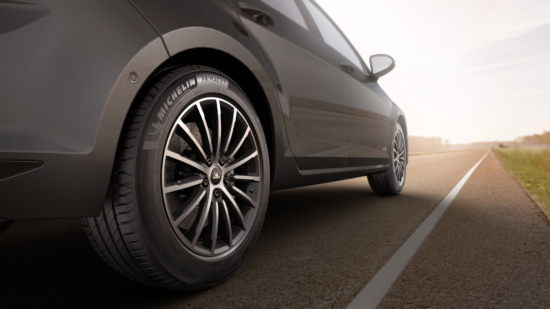Michelin sharing tyre particulate research system with ETRMA members
 Michelin reports that it has been committed to reducing tyre abrasion and to research on wear particles for the last 20 years. (Photo: Michelin)
Michelin reports that it has been committed to reducing tyre abrasion and to research on wear particles for the last 20 years. (Photo: Michelin)
Michelin reports that it is presenting a “new step forward with the development of a system for analysing small particles” as well as “the first research results to the scientific community and industry” during Tire Technology 2024. Details of this research were published in December 2022 and in March 2023. More recently, Michelin has made the system for analysing emitted light particles available to the tyre industry and to ETRMA (European Tyre & Rubber Manufacturers’ Association). The ETRMA will furthermore conduct a campaign of measurements on a larger scale with the aid of an independent third party. The campaign will launch this year and will continue for around 18 months.
Michlein’s system for analysing small, emitted particles is called “SAMPLE”. According to the company, SAMPLE captures, sorts, counts and characterises particles in close proximity to tyres with “unequalled precision and reproducibility”. With SAMPLE in place the design of biodegradable tyre wear particles is now possible, Michelin reports.
Tyre wear particles are on average the size of a human hair (100 µm) and form a complex mixture composed of equal parts of tyre rubber (50%) and minerals plus other road components (50%).
The Michelin study has quantified the number of these particles that contribute to atmospheric pollution, i.e. PM10 and PM2.5 also known as fine particles. Up till now, these figures had never been verified by such precise experimental measurements. The initial results show that among the particles emitted by tyres, on average 1.3% are PM10 and 0.16 % are PM2.5, liable to be found in suspension in the air.
This precise quantification is important both for Michelin to increase understanding of the links between the tyre, the road and the driving style and also for the official bodies in charge of estimating city pollution.
This approach is particularly significant in light of the the Euro7 standard that has just been adopted by the European Commission and which will shortly set down the regulatory tyre abrasion thresholds in order to reduce the quantities of particles emitted in Europe. This regulation has its own test method for quantifying all the wear particles from tyre and the road, in terms of grams per km per ton carried. It enables overall emissions to be measured on a very large scale for all the tyres on the market. Those not meeting the standard will no longer be marketable.
Michelin reports that it has been committed to reducing tyre abrasion and to research on wear particles for the last 20 years. This policy is said to have secured a 5 per cent reduction in wear emissions of Michelin tyres between 2015 and 2020 which has since continued.
At the end of 2023, the Group announced the creation of a common laboratory with the CNRS and the University of Clermont Auvergne: “BioDLab”. Its mission is to understand the biodegradation of wear particles, for then to develop tools for finding new tangible solutions to make them capable of being bio-assimilated.




Comments